Article's Content
This one goes out to all of my B2B SaaS marketers who have the luxury of trying to sell to engineers and developers.
It’s not an easy job. It’s not as simple as putting out a clever ad or running an interesting webinar. It’s not as simple as producing an ebook and putting a few posts up on LinkedIn.
It’s a bit more complicated… But it doesn’t have to feel impossible.
A lot of SaaS products have started to create developer ecosystems and APIs to offer data and inspire custom solutions that drive additional revenue and growth for the business.
When you look at the success of Salesforce’s AppExchange Ecosystem and the thriving Shopify Developer Ecosystem – it is very obvious that this approach can offer amazing revenue for both partners and the brand. In 2021, Shopify’s developer partners earned more than $230 million and an IDC (International Data Corporation) study predicts that Salesforce will contribute $1.2 trillion to local economies around the world. Not bad eh? Look at this growth from Shopify…
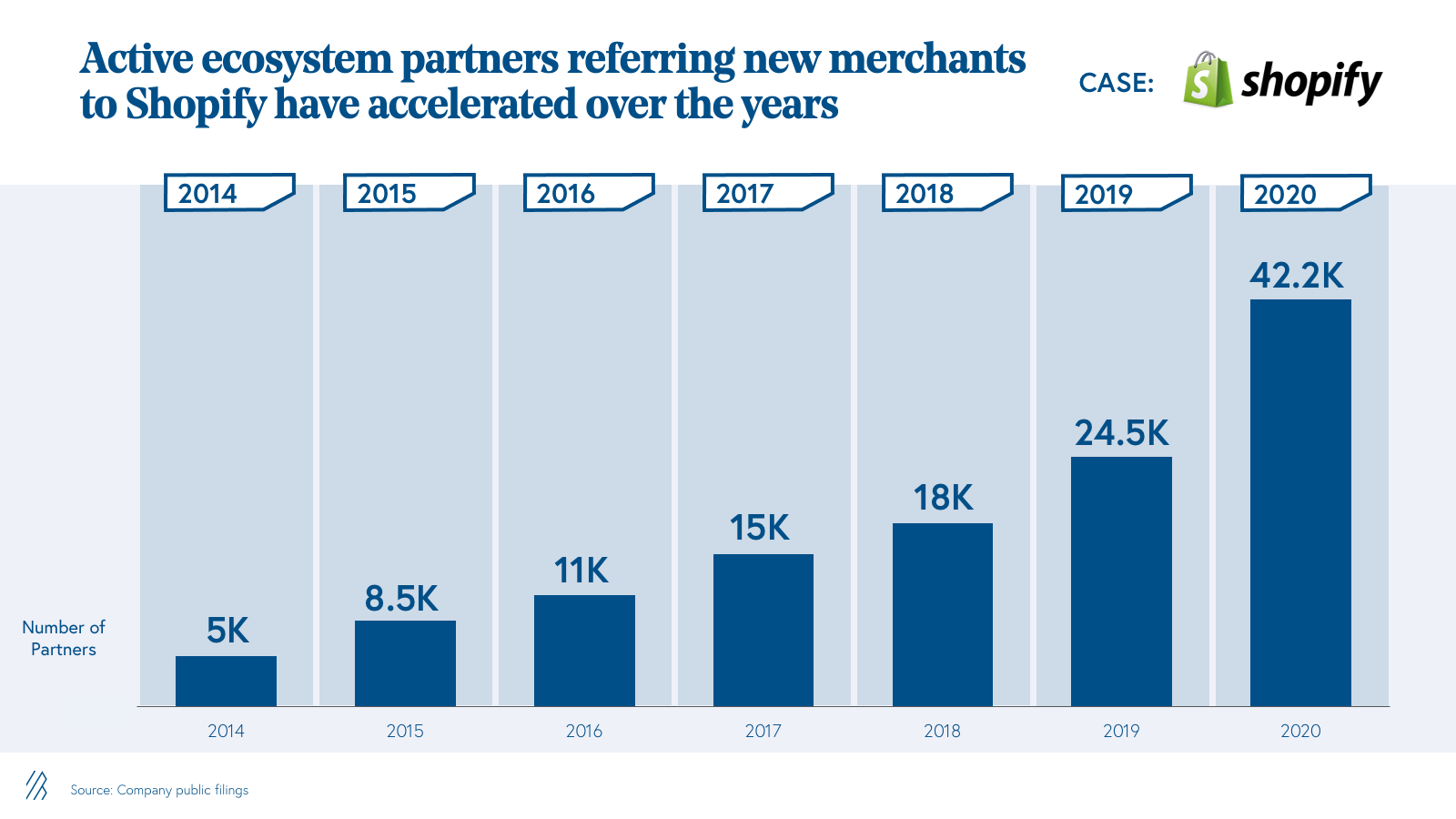
This doesn’t happen by accident.
It happens by investing in your community and investing in content that will support them.
The ShopifyDevs YouTube channel is a clear example of what an investment in your community looks like. The channel is filled with fun, engaging and beautifully designed videos that talk about everything from tactical steps to leverage the API, API monitoring, to high level strategic videos.
The amount of content uploaded on this channel and the quality of the edits demonstrates that this isn’t a small investment by Shopify. It’s something they’re taking seriously and the community has responded by watching and subscribing in a massive way.
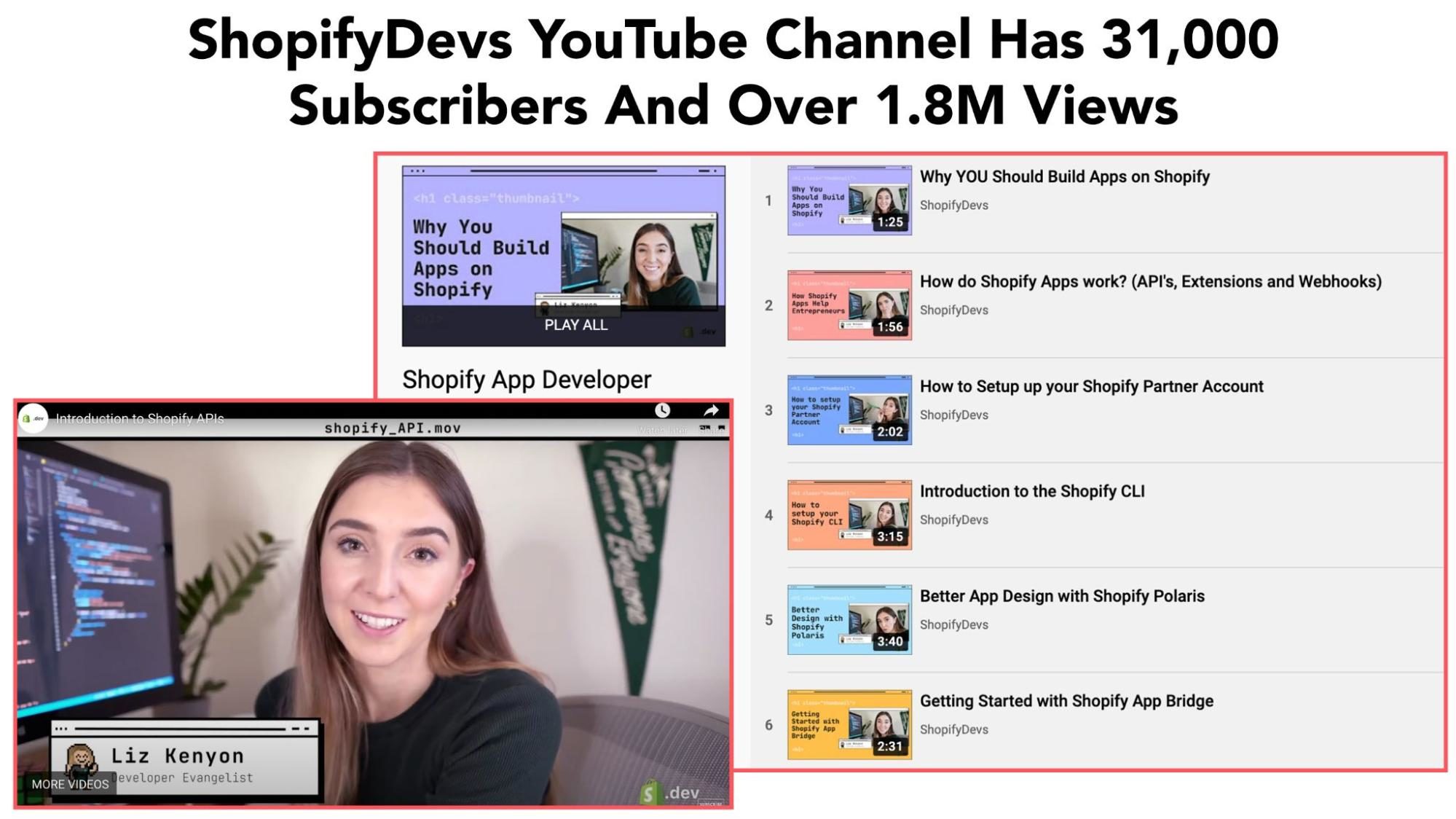
If you’re in this space, I don’t need to tell you about the opportunities that exist in creating solutions for developers, particularly Shopify developers. It’s a powerful strategy and the numbers that Shopify and Salesforce are doing in their ecosystem are great examples of it.
As marketers, we often overlook the fact that this is an area we should also be playing.
We shouldn’t just leave it to our product teams to go out and develop API documentation. We shouldn’t just leave it to the CTO to find time to create a great set of documentation.
We should be thinking about how we can support our own engineering team to create documentation and content that is going to actually add value to the lives of our customers.
One of the best ways to do that is by embracing and investing in great documentation.
Great API documentation is massively underrated as a content marketing strategy in B2B SaaS.
Great documentation can:
- Drive domain authority thorough links
- Establish trust with your customers
- Retain your customers long term
- Help elevate the product
- Inspire media coverage
- Earn quality backlinks
And so much more… Here’s a snapshot of some of the most popular documentation hubs and the content marketing benefits that they’re providing their brands:

But you have to know what you’re doing. Here are six simple techniques to keep in mind when creating your SaaS documentation. I’m hopeful that you can use this to ensure that the documentation you’re creating is not only used but also found through search and your customers’ inbox when someone emails it to them saying “check this out.”
Let’s get to it…
Keep Your Documentation Clean
You don’t need to reinvent the wheel here.
Companies like Shopify, Stripe, WorkOS, and Gitlab have shown us what great documentation looks like. The format doesn’t need to be overly complicated.
Keep it simple.
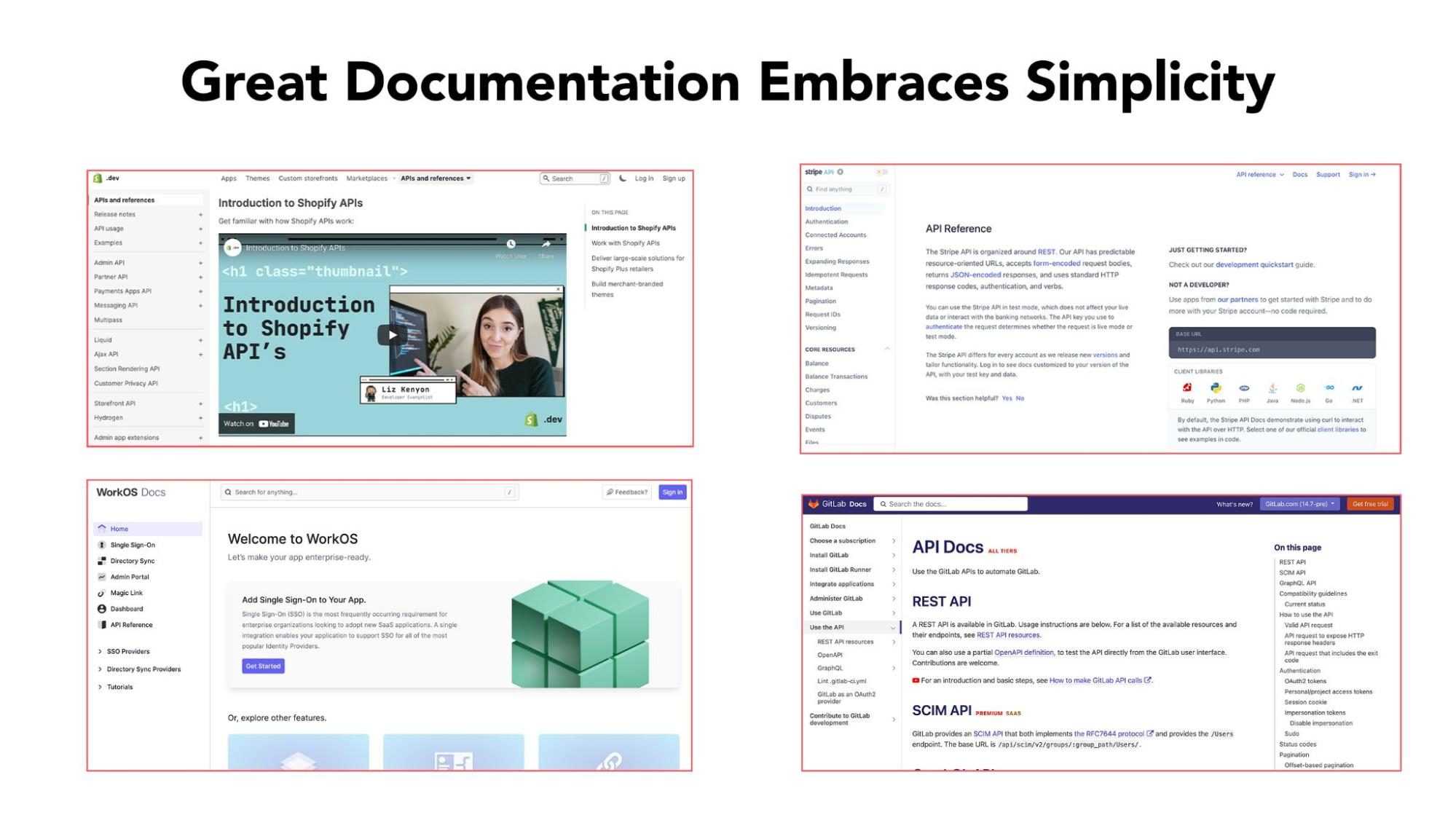
Place the navigation on the left and put the content/code on the right. The top right-hand side offers people the ability to log in, sign up or find out information about what’s new in the docs. Ensure that there’s a search bar available as soon as people land on your API docs and if you have the budget to make things more interactive – incorporate an intro video on your homepage.
Make It Easy To Navigate
My biggest piece of advice for marketers trying to build a documentation section of their site would be to treat the documentation homepage like a landing page. The goal for the front page of your documentation hub is to (i) direct them to the most common path or outcome and (ii) educate them on what they will find in a company’s documentation.
Will they find quickstart guides? Will they find definitions? Is there somewhere they can go for more 1-1 support? Try to answer all of these questions in the homepage by creating an experience that is intuitive and easy to follow. Remember:
This isn’t where you win your trip to Cannes.
This is where you win your promotion.
Another interesting approach that I saw implemented by the folks at WorkOS was the ability to navigate by use case. Stripe does this well by having a Docs page prior to an API page. You can select whether you’re looking for Business Ops Docs or Financial Services Docs…

Another product that does this really well is Twilio:
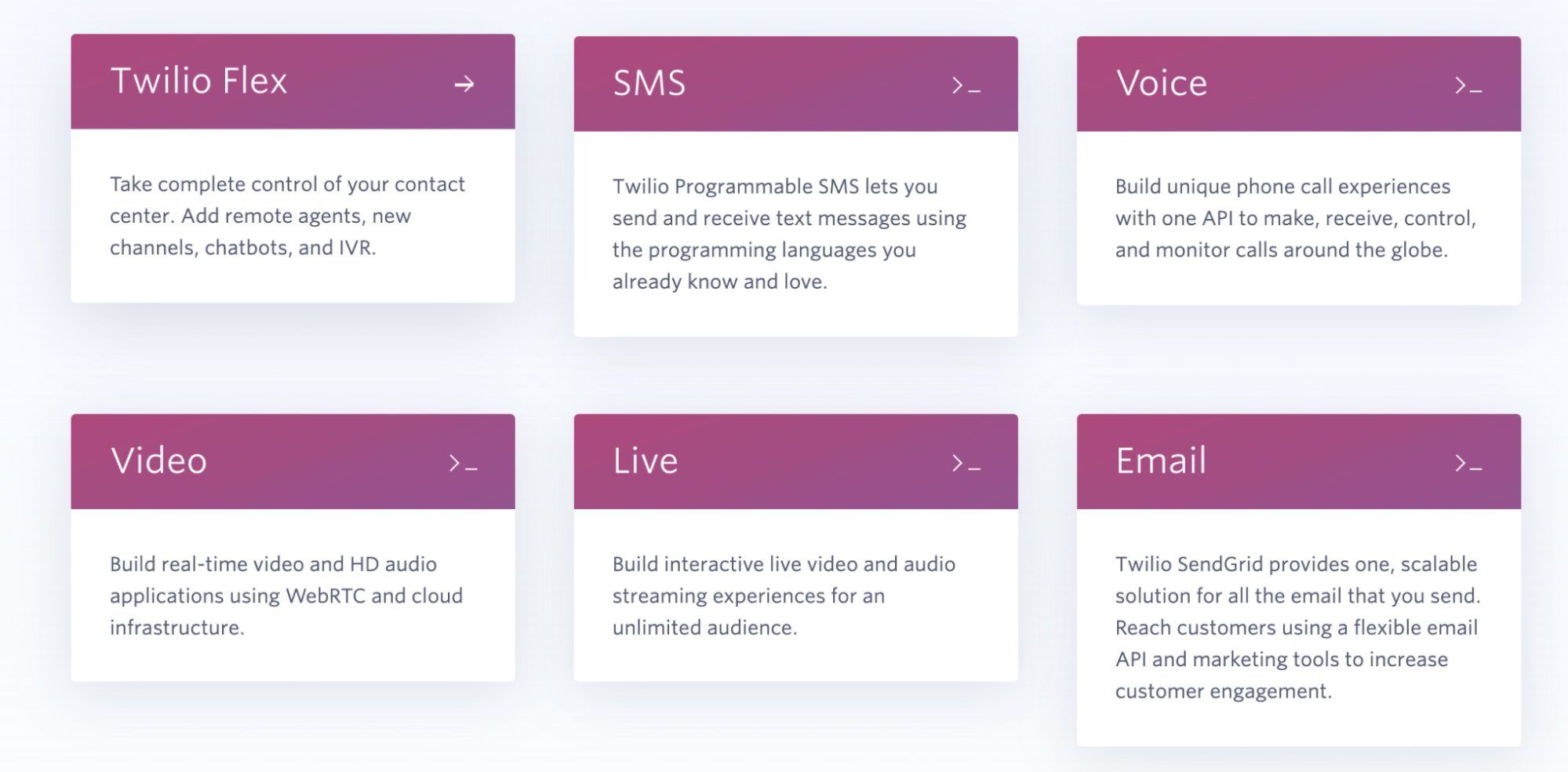
If you have a robust set of products make it easy for your users to navigate to documentation by use cases. Use analytics and product data to inform the prioritization of documentation and show you understand the pain points of your customers.
Structure Your URLs With Excellence
Want to see digital magic? Visit Stripe’s documentation, watch the URL and scroll…
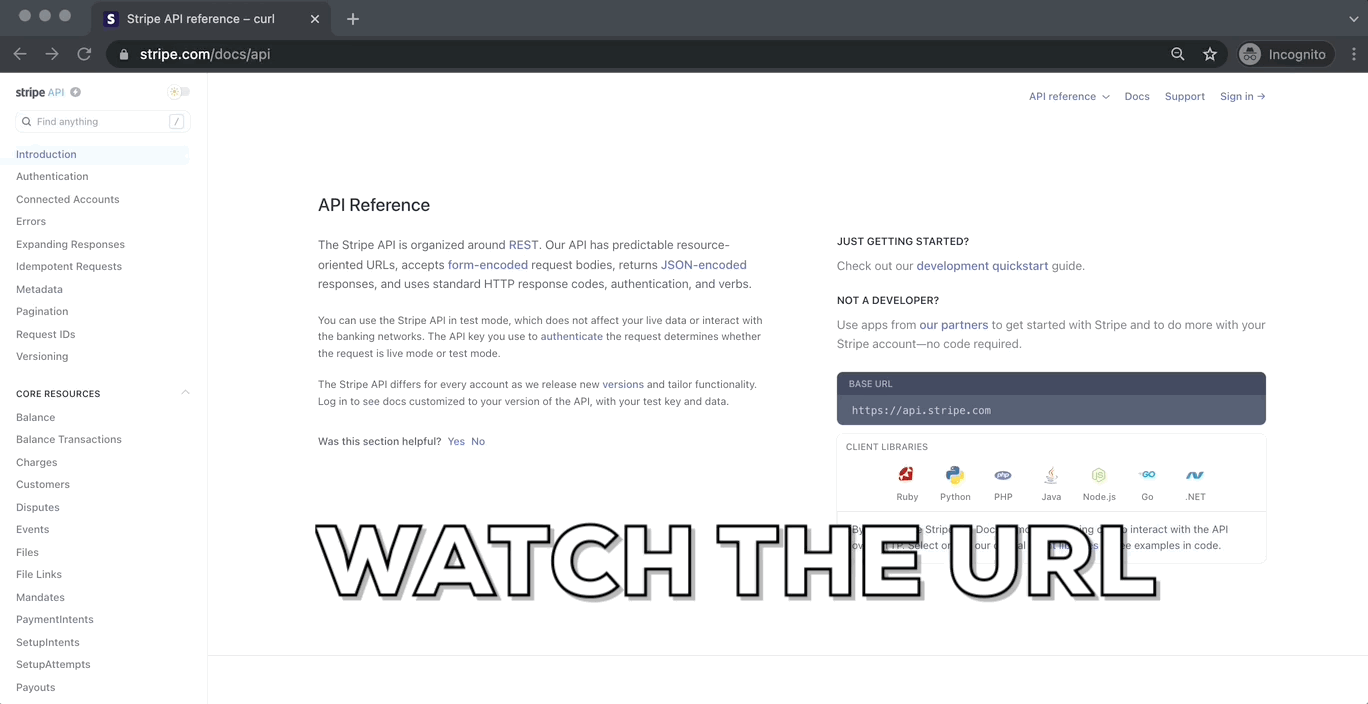
As you scroll the URL changes from docs/api to /api/authentication to /api/metadata and so every other extension that they have. It’s a thing of beauty. Why?
Because each of these URLs are linkable and drives people to this specific section. It’s the ideal user experience (infinite scroll) while still offering Stripe the ability to index these individual sections in Google through their domain. It’s the thing an SEO’s dreams are made of…
Not only are you able to consume the content without going to a new page – You’re able to share specific sections using the URL. Today, Stripe has more than 45,000 referring domains linking to their documentation. The strategy of making each key section a linkable URL is a great way to ensure that writers, engineers and developers link to it when appropriate.
Don’t Try To ‘Market’ In Your Documentation
Marketing has a love-hate relationship with documentation.
Mainly because marketers LOVE trying to find ways to spice things up and add their ‘brand essence’ into everything. It’s not necessary with documentation. Cut the fluff and don’t try to sell your product or various features. Stick to what people want: code and direction.
Don’t Let People ‘Assume Their Errors’
This is a pretty tactical piece of advice but developers want to find out WHY things don’t work.
Create documentation that showcases WHY there are errors in your product and when trying to build on your platform. It’s one of the most frequently searched things when it comes to technical docs but I’ve seen it left out of many API docs. Make a list of the errors that people can be met with and link to the documentation around how these errors can be prevented.
My final piece of advice when it comes to creating great documentation is this…
Write For Humans First, Bots Second
This might be the most important part of the documentation.
You need to prioritize the developer experience when it comes to documentation before you even start thinking about how Google will view your content. Is the indexability, URL structure and headlines that you use for your documentation important? No doubt.
But the ability to capture search volume is icing on the cake AFTER you solve real problems and offer clarity in your docs. Create for people first. Optimize second.
Hope you have an amazing week and found this helpful. I’m convinced that documentation is one of the most important and underrated elements of the marketing mix for engineer/developer-focused companies. If you’re working in these spaces and want support in creating content that will help your engineering community love you – Get in touch!
I’m always down to chat about how content can be used to shape culture.







